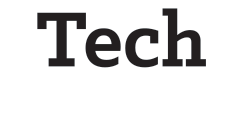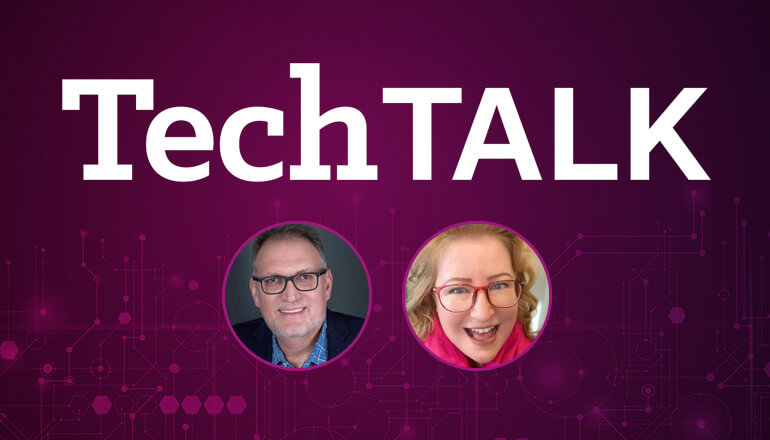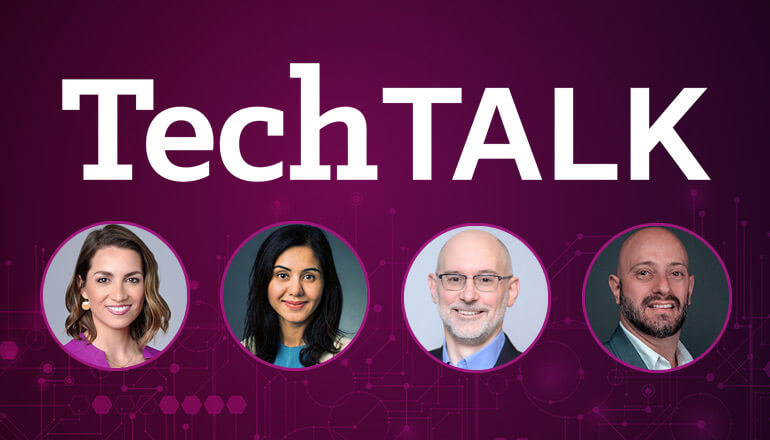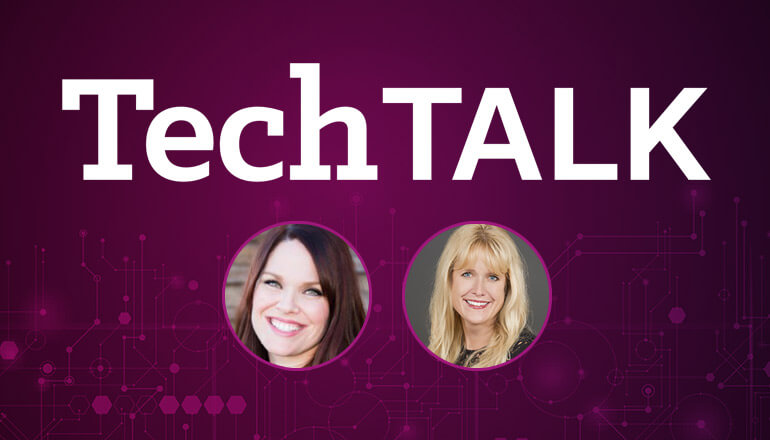Audio transcript:
Leveraging Artificial Intelligence for Workplace Safety
Published November 24, 2020
DARREN
Well, hello everybody, I'm Darren Lloyd, I'm the Vice President of Professional Services for Insight Canada, and I've got Dan Kronstal with me today. He leads our DI Digital Innovation Solution Area for Canada. And we're excited to be talking about a really interesting project, that we're doing for one of our clients. So, Dan, maybe let's just start off, tell me a bit about this client, and why they came to us for help.
DAN
Sure, thanks, Darren.
I first met Andrew Lennox from AltaSteel at an executive briefing counsel that we did with Microsoft in Redmond. He joined us with a number of other clients, as we were showcasing new Microsoft technology, and Insight services that supports our technology. And Andrew and I were chatting about some of the needs that they had at AltaSteel, and where Insight could potentially help. We were talking about it more from a cloud productivity perspective, which is a little bit more in our typical line. And then he started talking about some interesting problems that they were having related to hazardous objects on the, on the floor. AltaSteel does steel smelting, and one of the problems that they had, was that hazardous objects were getting introduced into the, the workflow there. And he was just thinking about ways that they could avoid that and prevent the damage to equipment and hazard to personnel, and we got to talking about how Insight could help. So that was really the root of the conversation.
DARREN
Okay, so they essentially get train cars full of scrap metal, coming into the factory, and they've got like a giant crane and a magnet, and they sort some of this, and then it all goes into a big furnace. And what you're saying is Andrew's problem was, listen, we have hazardous material. So, what kind of hazardous material are we talking about?
DAN
Well, the example that he gave was a propane tank. And so if a propane tank is getting introduced to a furnace, it's usually no big deal, but if it's a propane tank that has a bunch of gas in it, well, that's a big deal, and it was causing explosions. 'Causing millions of dollars of machine damage, and throwing molten metal all around the facility, and that's causing a, you know, potential for human harm. So that was, that was the issue was that these, these propane tanks were slipping in, and it happened more than once, and that's enough to need a solution to that problem.
DARREN
Right, and so he was asking huh, is there any way that we could use technology to solve this problem?
DAN
Yeah, his idea actually was surely artificial intelligence can help us do this. He was already kind of thinking down that path, and so what we said was absolutely. There's a great service from Microsoft, and the Cognitive Services Portfolio, and I called the Custom Vision Service and we can use that to train an artificial intelligence model, to specifically look for, detect and identify these propane tanks, so at least some that's fit a specific type. And then that would be the start, at least the pilot, for detecting a portfolio of hazardous objects, as they're introduced to the workflow.
DARREN
That's super interesting, so it starts with the idea and the approach, and the capabilities that we know we can tap into, but it quickly becomes a lot more complex than that. I imagine where you go, okay, where do we put the cameras? How do we, you know, we'll make sure that they're stable, and what's the network connectivity like? So, talk through a little bit about, how this solution came together.
DAN
Absolutely, yeah, and you're, you're right. There's a lot of additional complexity. It's easy enough just to train a simple model, I've done it myself for one of my children's toys at home here, just as a way of exercising the machinery a bit. But when you're doing that in an industrial environment, of course, as you mentioned there are many considerations that you need to also include in designing a solution.
So one was certainly the number of cameras, and so as part of originally doing the site inspection of the AltaSteel facility, and making sure that we had, our heads kind of wrapped around what that would need to look like. It basically came down to the idea of attaching the cameras to the crane boom, as the most practical approach. So, we had our enterprise architect Jason Lee, working with the AltaSteel team. And he did actually a 3D model rendering of their facility, and modeled out where the cameras would need to go, to get the right kind of field of view, and to get the measurements of how much cabling are we going to need, and where can we place power and all that kind of thing. And so, it helped tremendously to model that out in advance, so that we had a visual way of really understanding the space and the constraints, and dimensions and all that kind of stuff. But part of that solution design really is factoring in for what you say, your vibration on the crane, and is the magnetic interference going to be too much for the cameras? And so, a little bit of an evaluation, and kind of proof of concept work has been done to make sure that we had a solution that would work.
DARREN
It's so interesting, so you mentioned Custom Vision, what other services or technologies are we using in this solution?
DAN
It was a great time to be doing a project like this 'cause Microsoft just released their new Live Video Analytics capability, which is built on some of the IoT, and data ingestion stream work that you can do in Azure. And so it's specifically designed for almost this very thing where you have camera streams from multiple cameras, coming into some high power cloud services, to run the object detection and things like that, against the, the objects that are being, that your model is trying to detect. And that's all running on Azure IoT Edge, and so there's an Edge module, that's been pushed down to the gateway device that was supplied for us. And we're actually working with Lenovo on that, they gave us an SE350, which is a pre heavy hitting gateway device to use. So, Live Video Analytics is running there, our trained model will run on that as well. And then all of that compute is happening at the Edge with inventing being pushed up to cloud services, through a Azure IoT Edge, or sorry, IoT Hub rather, up in the cloud. And then a further pipeline can be applied to that, using stream analytics, if you like, or furthermore sort of Autoband analytics being applied later on.
DARREN
And so this model and this approach that we've gone with, seems like it's adaptable to, as you mentioned, training it to identify other things, other than propane tanks that may be deemed hazardous.
DAN
Yeah, yeah.
DARREN
Okay.
DAN
Exactly, it's just a matter of building different models to accommodate objects that are required for detection. Or adding those objects in to the model that you've already got trained. Usually you, it requires about 2000 images of an object to get a really, really highly accurate model. And so, there's a fair bit of work just in the image capture and model training that that's actually the biggest lift.
DARREN
Mm, and I guess, what kind of impact, is this going to have for them? Like, I mean, obviously we know there's a safety issue, there's a financial impact. Just talk a little bit about the benefits, that we're going to be able to, to realize with the solution.
DAN
Sure, yeah, this project has the interesting advantage of basically paying for itself, upon detection of a single object. So, if even one time we prevent one of these explosion events in their facility, that's already going to be a sufficient return, on the investment made, for the duration of this pilot project. Of course, any sort of human hazard is worth avoiding, and so that would be a particularly beneficial return as well. But financially, the cost alone of this pilot project is much, much smaller than any sort of impact, that one of these events would cause. So that's right away, you've got that immediate ROI.
Now, the other advantage is that because the workaround, that was implemented by AltaSteel to prevent this kind of event happening in their current or previous workflow, was a lot of manual effort. What we've also realized through this is an increase in operational efficiency, just by not having all that additional manual effort applied to inspection of materials.
DARREN
Wow, and maybe just wrap it up by discussing, what is the Microsoft cloud and what are these services and capabilities bringing to us in terms of our ability to bring a solution like this to life, in a relatively short period of time?
DAN
Well, as I mentioned a little bit earlier, as a way of exercising them, the machinery of training a model, and just kind of getting my own head around it, I'm not delivering the project, but as part of just understanding it myself and the technology, I actually built for myself in my own Azure subscription, an AI model that can use the webcam I'm talking to you with now to detect one of my, one of my children's toys.
Just the idea that you can do that, you have access to this amazing technology. Each one of us has that like commoditized access to artificial intelligence at that level, is really, really amazing. So, I love the fact that it lets us as technologists and practitioners, really be creative in the types of solutions that we can bring to add business value to our clients, it's just amazing.
So, AI has one machine learning and being able to feed that back in, it's all just a really really neat cycle of innovation and creativity.
DARREN
Well, thanks so much Dan, for spending some time chatting about this, it sounds like we're doing some really interesting work, and we're partnering with Microsoft on all their amazing capabilities. And so, we look forward to doing more of this kind of work in the future.
DAN
Thanks for the time Darren.
[Music]









